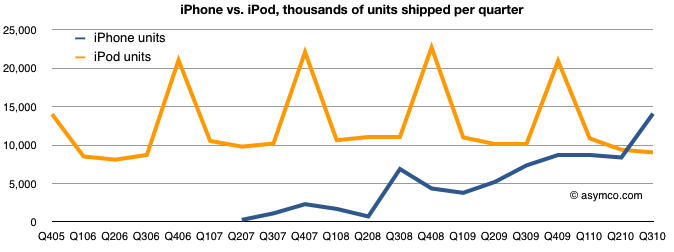When mobile platforms are discussed, the conversation frequently turns to market share battles between Android and iOS. I’ve pointed out before that the problem with this reasoning is that market share in a market that’s growing at 90% is a false measure of performance.
The more important measure is how much of the non-smartphone market is being taken by smartphones and how fast the whole phone market is growing. Competition with non-consumption is very different from platform warfare.
But even when discussing the rivalry between current platforms, the Blackberry and Symbian are often overlooked as contenders. Windows Phone and iOS come in and out of discussion only on the basis of press releases. The truth is however that Symbian, Windows, Blackberry are not going to disappear anytime soon. Why is that? Continue reading “What job is a Blackberry hired to do?”


